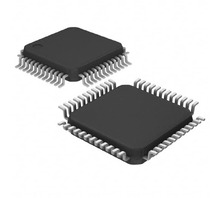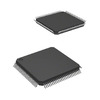Manufacturer Part Number
NUC120LD2BN
Manufacturer
Nuvoton Technology Corporation America
Introduction
The NUC120LD2BN is part of Nuvoton's NuMicro™ NUC120 series of 32-bit microcontrollers, which is based on the ARM® Cortex®-M0 core. This microcontroller is designed for industrial control and applications requiring robust serial communication capabilities.
Product Features and Performance
Core Processor: ARM® Cortex®-M0
Core Size: 32-Bit Single-Core
Speed: 50MHz
Connectivity: I2C, IrDA, SPI, UART/USART, USB
Peripherals: Brown-out Detect/Reset, DMA, I2S, LVD, POR, PS2, PWM, WDT
Number of I/O: 31
Program Memory Size: 64KB (64K x 8)
Program Memory Type: FLASH
EEPROM Size: 4K x 8
RAM Size: 8K x 8
Voltage Supply: 2.5V ~ 5.5V
Data Converters: A/D 8x12b
Oscillator Type: Internal
Operating Temperature Range: -40°C ~ 85°C
Product Advantages
Low power consumption
High integration with multiple peripherals and connectivity options
Support for a wide range of supply voltages enhances compatibility
Key Technical Parameters
Speed: 50MHz
32-bit ARM Cortex-M0 core
64KB flash memory
8K RAM
I/O count: 31
Operating temperature: -40°C to 85°C
Supply Voltage: 2.5V to 5.5V
Quality and Safety Features
Brown-out Detect/Reset
Low Voltage Detection (LVD)
Programmable Watchdog Timer (WDT)
Compatibility
Compatible with a variety of serial interfaces such as I2C, SPI, and UART
Support for USB connectivity
Application Areas
Industrial control systems
Serial communication systems
Consumer electronics
Product Lifecycle
Status: Obsolete
Note: Customers should look for replacements or upgrades as this model is no longer being manufactured.
Several Key Reasons to Choose This Product
Efficient ARM Cortex-M0 core delivering high performance at 50MHz
Robust connectivity options including USB, I2C, SPI, and IrDA
On-chip peripherals support comprehensive system-level functions
Low power requirements with a wide range of operating voltages, suitable for diverse applications
Industrial grade with operating temperatures ranging from -40°C to 85°C
Obsolescence status prompts consideration for future-proof alternatives



 NUC120RC1BNNuvoton Technology CorporationIC MCU 32BIT 32KB FLASH 64LQFP
NUC120RC1BNNuvoton Technology CorporationIC MCU 32BIT 32KB FLASH 64LQFP NUC100VE3DNNuvoton Technology CorporationIC MCU 32BIT 128KB FLASH 100LQFP
NUC100VE3DNNuvoton Technology CorporationIC MCU 32BIT 128KB FLASH 100LQFP